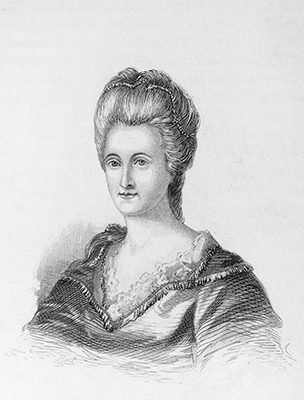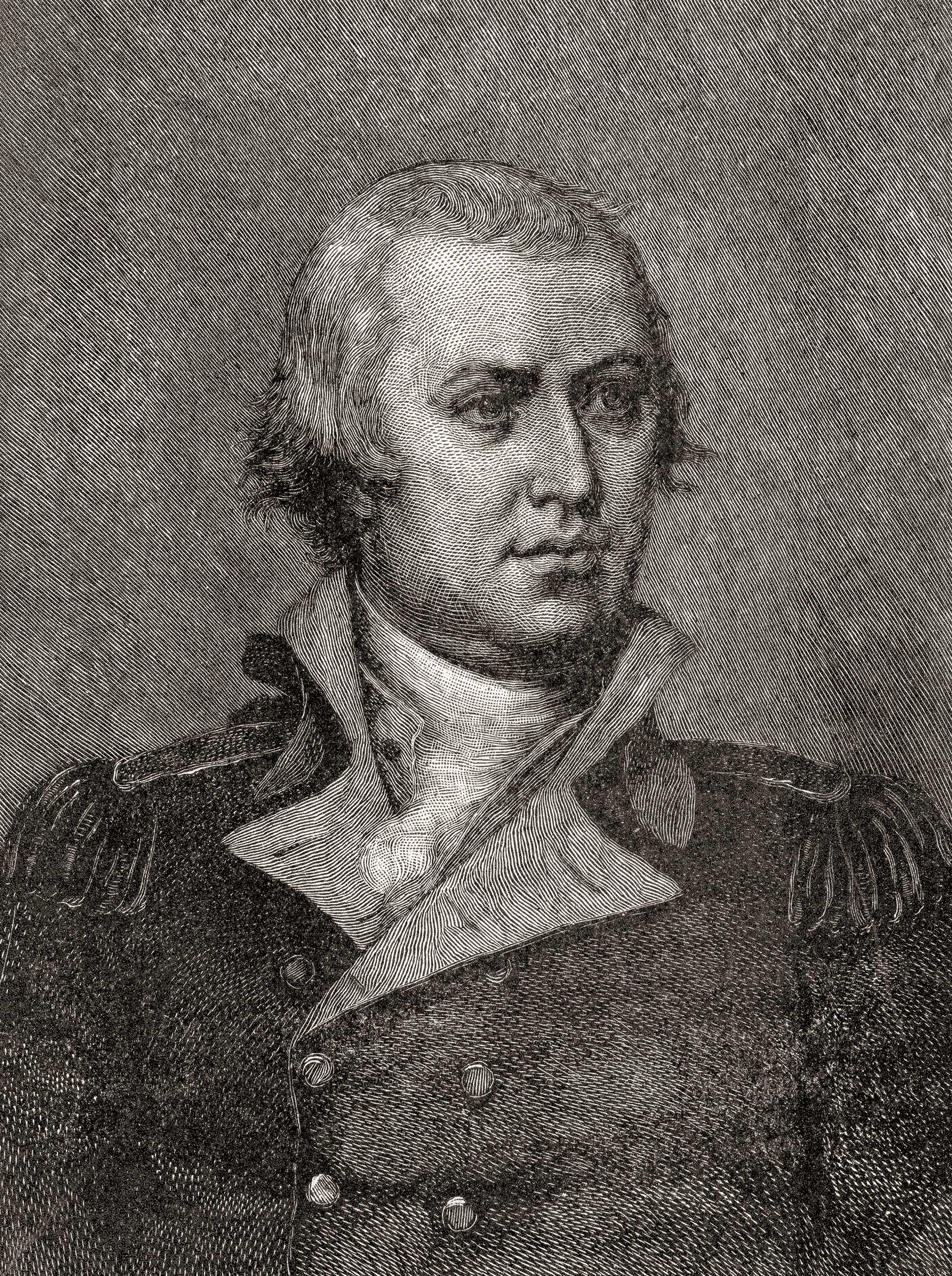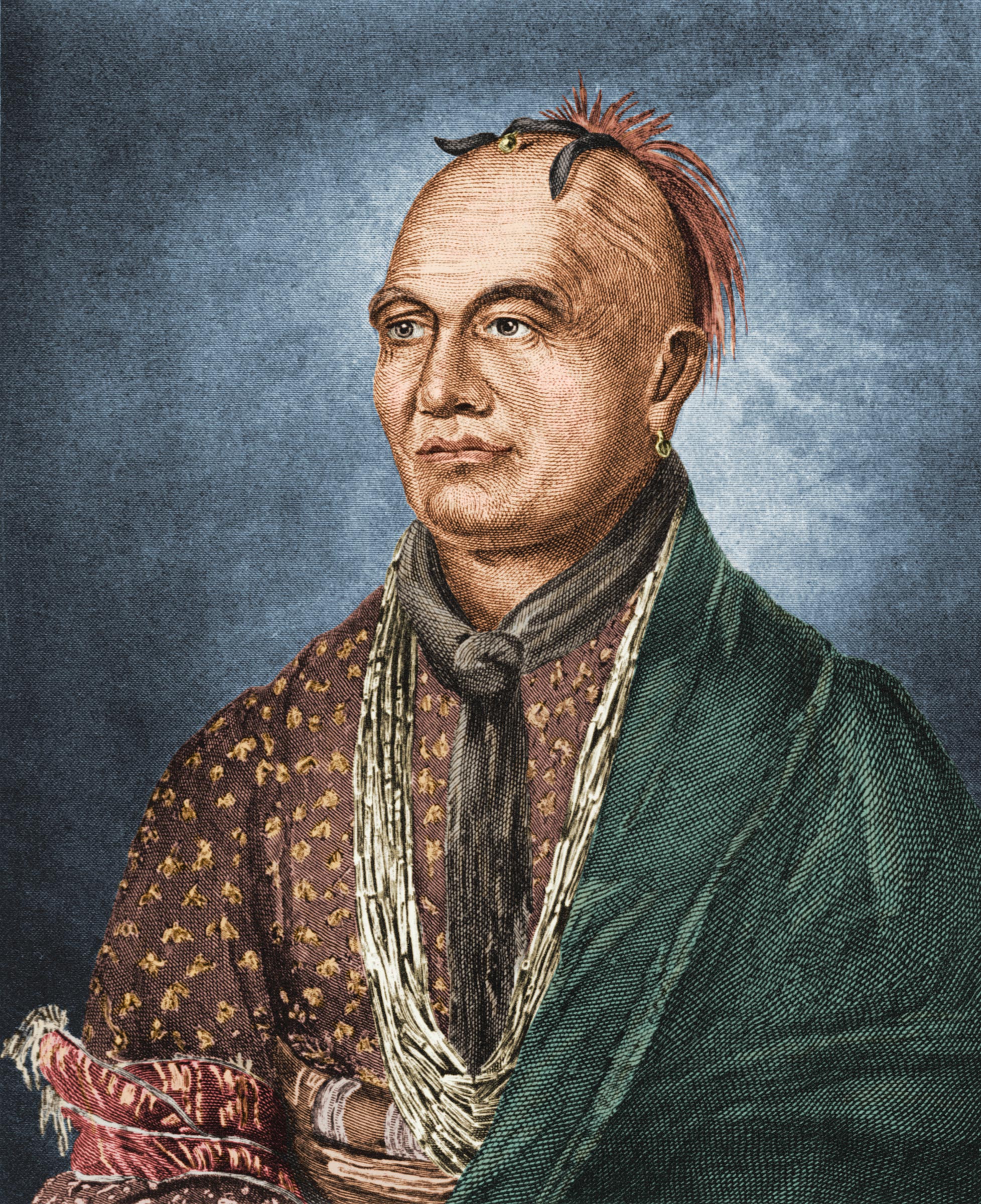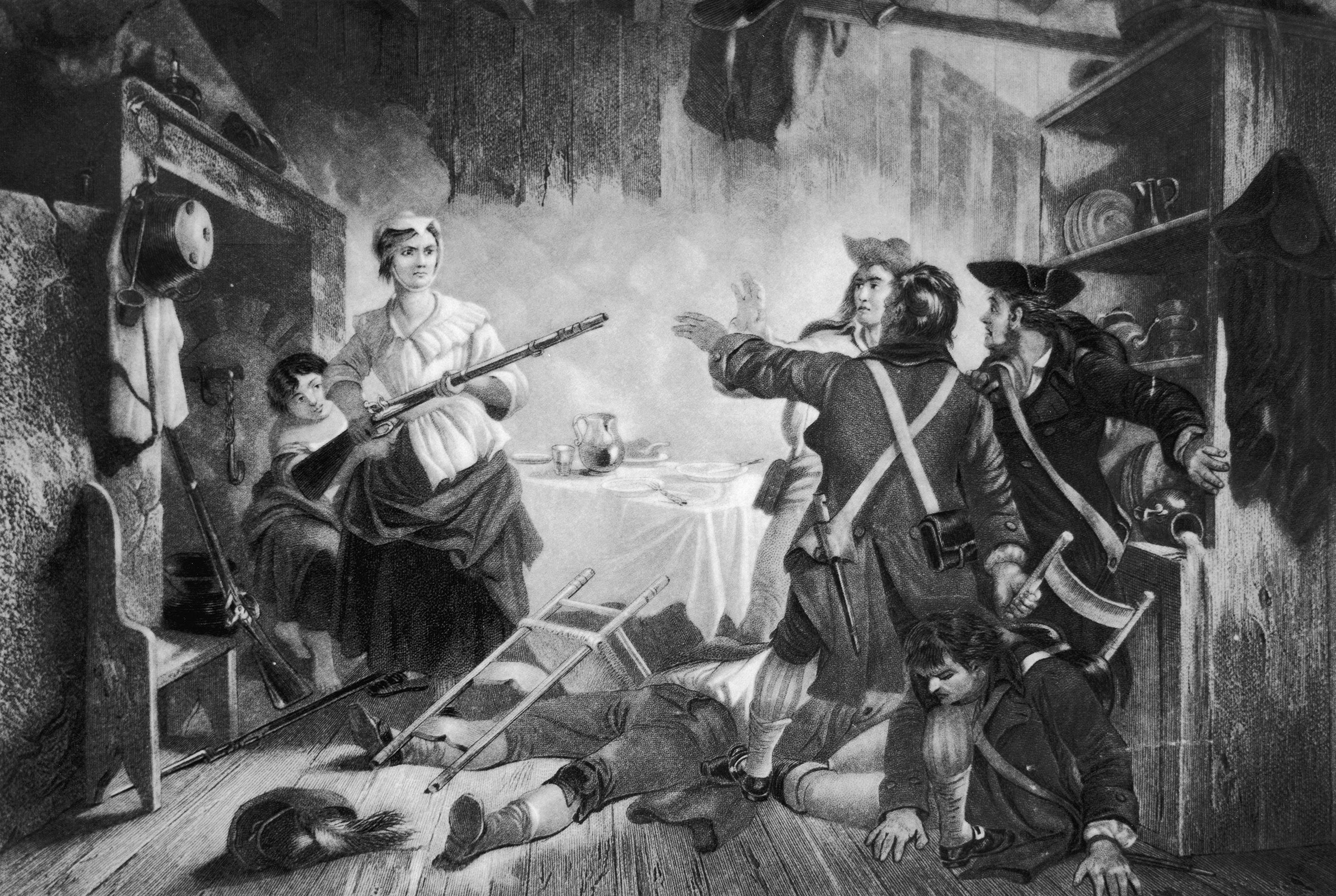Every year, Americans get the day off and set off fireworks to celebrate Independence Day, the day in 1776 when the Declaration of Independence was printed (though the Continental Congress voted on the resolution declaring independence from Britain two days earlier.) While Founding Fathers behind that document like John Adams, Ben Franklin, and Thomas Jefferson are household names, there were many men and women who played an important role in shaping America in its infancy who are not as well known, This is especially the case for women and minorities. Native Americans, furthermore, had their own functioning societies that predated the U.S. by centuries.
TIME asked historians who study the founding era and early American history to highlight people from this period who made significant contributions to America in their communities. From the brain behind the “We the People” clause in the U.S. Constitution, to a woman who risked her life holding loyalist soldiers prisoner during the Revolutionary War, what follows in an effort to broaden our understanding of the young nation during this period.
Mayken van Angola (early 1600s-late 1600s)
A founding mother of America’s Black community
One founding figure that I remember this Fourth of July is Mayken van Angola. Born in the early seventeenth century, Mayken was enslaved to the Dutch West India Company on the island of Manhattan for over three decades. She campaigned for and won her freedom in 1662, along with two other women, Susanna and Lucretia. But their freedom was constrained—they had to promise to continue to clean the house of Director General Petrus Stuyvesant, the leader of the Dutch colonies in North America, to maintain their freedom. Sadly, Susanna and Lucretia died shortly after gaining their freedom, leaving Mayken to clean the entire house on her own. Perhaps reeling from the loss, Mayken campaigned for freedom once again, arguing for relief from her forced labor, which was granted in April 1664. Mayken lived in freedom throughout the remaining months of Dutch rule and well into the period of English control that began in August 1664. Married to a free Black landholder named Domingo Angola, Mayken was part of a growing African and African-descended community in New York, and was a founding mother of the Black community in America. Her story is one of freedom from oppression and external control over her body, and has a certain extra salience this Independence Day.
—Nicole Maskiell, author of Bound by Bondage: Slavery and the Creation of a Northern Gentry, forthcoming
Gouverneur Morris (1752-1816)
The author of ‘We the People’
The most important unknown founder is a peg-legged guy from New York named Gouverneur Morris. Everybody knows who wrote the Declaration of Independence. Nobody knows who wrote the Constitution. Gouverneur Morris single handedly took all the drafts and put them together in a week and gave the Constitution its shape. And he made the most important editorial change in American history. The draft that he was given began as follows: “We the People of New Hampshire, Massachusetts, Rhode Island” and listed states down the east coast. He changed it to read “We the People of the United States.” All of a sudden, the single issue that’s central to the whole constitutional convention—”Are we a nation or a confederation of states?”—is resolved in that one line.
—Joseph Ellis, author of The Cause: The American Revolution and its Discontents 1773-1783
Lemuel Haynes (1753-1833)
America’s first abolitionist writer
In July 1776, Lemuel Haynes, a free Black man with a white mom and a Black dad, was a soldier in George Washington’s Continental Army. He had just finished writing an essay called “Liberty Further Extended”—one of the world’s first anti-slavery pamphlets. When he read the Declaration of Independence, he liked the phrase ”all men are created equal” so much that he used it to open his essay—thus becoming the first person to quote what are now the Declaration’s five most iconic words. Whites of the founding era who wrote about the Declaration emphasized its states’ rights passages. In those early days, Haynes and other anti-slavery activists like Benjamin Banneker were about the only ones who read the Declaration as promoting personal freedom. Those abolitionists—and in the 19th century, women’s rights’ campaigners—eventually convinced their fellow Americans to see our founding document the way all Americans do today: as a universal declaration of human rights.
—Woody Holton, author of Liberty Is Sweet: The Hidden History of the American Revolution
Esther de Berdt Reed (1746-1780)
A fundraiser for the Revolution

Born in England, Esther became a prominent American patriot. Following the most significant American defeat of the Revolutionary War—in which about 3,000 men surrendered to the British in the fall of Charleston, S.C. in May 1780—she wrote a tract titled “Sentiments of an American Woman,” which called for women to rally to the revolutionary cause. She compared their potential role to Biblical and ancient heroines who came to the aid of their countries. The pamphlet proposed a fundraising drive, which she then organized, headed in each colony by the wife of the governor, and nationwide by Martha Washington. Her idea was to solicit donations from other women to reward each American soldier with a small sum of hard money, not the inflated currency then circulating. Women went door to door in Philadelphia seeking contributions, raising what would be hundreds of thousands of dollars today; women did the same in Maryland and New Jersey as well.
When Esther wrote to Gen. George Washington to announce the plan to give each soldier a gift from patriotic women, Washington rejected the idea. He replied that he feared the men would spend such money unwisely, most likely on alcohol. Instead, he asked Esther and her colleagues to make shirts for the soldiers. Esther initially disagreed, daring to oppose Washington and to argue that soldiers’ clothing should be supplied by the government—but she finally had to give in. The money collected by the canvassers bought linen to make shirts distributed to soldiers, although it’s unclear whether the wealthy women who started the organization made the shirts themselves or hired seamstresses to do so. Esther Reed’s pamphlet was the first major public statement by an American woman about a political issue. She has however been forgotten, largely because she tragically died later in 1780 in the aftermath of childbirth. Her work was concluded under the leadership of her friend Sarah Franklin Bache, Benjamin’s daughter.
—Mary Beth Norton, author of Liberty’s Daughters: The Revolutionary Experience of American Women, 1750–1800
Nathanael Greene (1742-1786)
A nearly forgotten general

Born and raised a Quaker in Rhode Island, Greene was a military amateur. But he rose from the militia to become George Washington’s most dependable and loyal general. Greene ignored his religion’s calls for pacifism to join the American cause on ideological and moral grounds. His “confidence” didn’t “arise from our discipline and military knowledge, but from the justice of the cause and the virtue of America,” Greene himself wrote. Showing the same sense of morality throughout the war, Greene championed equal pay for Black soldiers, “humanity” for loyalists, and rules of war by which “cruelty was dishonorable.”
“Amateurs talk tactics, professionals study logistics,” says the old military maxim. Greene was able to think in terms of an entire campaign, not a single battle. Today, the U.S. military would call it operational art—the ability to link the strategic with the tactical. Greene did it before such a concept existed. He used traditional and guerilla fighting, picking his battles and strategically retreating throughout the Carolinas. Greene described his strategy to Washington as: “We fight, get beat and fight again.” Despite few individual victories, Greene was able to exhaust the British and win the Southern campaign. He excelled at the thankless task of supplying the Continental Army as Quartermaster General, even driving himself into financial ruin by personally assuming the debt to equip his troops.
So why don’t more Americans know about Nathanael Greene? Washington tends to overshadow all other generals, but Greene’s early death from heat stroke in 1786 may be the culprit. A Broadway cast sang “every other founding father gets to grow old” about Alexander Hamilton; Greene died even younger at age 43. Gone a year before the Constitutional Convention, he lacked the opportunity to cement his legacy in the new republic.
—Craig Bruce Smith, author of American Honor: The Creation of the Nation’s Ideals during the Revolutionary Era.
Thayendanegea (1743-1807)
A Native American diplomat

Thayendanegea, a Mohawk from the village of Canajoharie in the Mohawk River Valley (later called New York), rose to prominence as a diplomat, political leader, and warrior among the Haudenosaunee (People of the Longhouse), also known as the Iroquois or Six Nations Confederacy. In his youth Thayendanegea attended a boarding school in Connecticut run by the Congregational minister Eleazar Wheelock, where he became a fluent English speaker and took the name Joseph Brant after undergoing a Christian Baptism. This dual identity and bilingualism allowed Thayendanegea to achieve a position of great political importance in eastern North America during the era of the American Revolution, a time when the social world of Indigenous and colonial peoples overlapped.
While the Grand Council of the Iroquois decided to remain neutral during the war, Thayendanegea fought with the British. After the revolution Thayendanegea became an advocate for peace with the newly independent United States, and an advocate for Native unity. He linked peaceful co-existence with the U.S. to recognition of Native land claims, declaring Indigenous territory outside of the 13 states to be a “common pot” or “a dish with one spoon.” The land of North America, he argued, belonged to all Native peoples and should not be divided or sold off by individual Indian nations.
—Michael Witgen, author of An Infinity of Nations: How the Native New World Shaped Early North America
Eliza Harriot O’Connor (1749-1811)
An early campaigner for equal rights for women
O’Connor was the first woman to give public lectures in the United States. Importantly, she gave them at the University of Pennsylvania in Philadelphia in the summer of 1787 when the delegates were gathering to draft the Constitution. Almost every day in the newspaper as the delegates worked on the Constitution, there was a notice that there was a woman giving lectures nearby. George Washington attended one of them, and because of his attendance, newspapers across the United States spread the word and it went viral. I argue that her legacy is the fact that the Constitution is gender neutral, permitting the interpretation that women could hold political office and participate as voters.
She also tried to establish a very ambitious female academy, which would be run by a majority of women. O’Connor represents the belief percolating at the time that women were equally capable of the same types of education as men and the same types of political participation. She’s a really important model of, in the framing generation, people pushing the boundaries of exclusion and imagining that the United States could be a place where people—regardless of sex or gender—can participate fully in public life.
—Mary Sarah Bilder, Female Genius: Eliza Harriot and George Washington at the Dawn of the Constitution
Benjamin Rush (1746-1813)
The enlightened doctor
Rush is a second-tier revolutionary who is not as well-known as he ought to be. Although he was a member of the Continental Congress from Pennsylvania and a signer of the Declaration of Independence in 1776, he was not primarily a politician but a physician and scientist, indeed, the most celebrated physician and scientist in the early Republic. More than either Franklin or Jefferson, Rush personified the American Enlightenment. Since he came to believe that “the science of medicine was related to everything,” he considered everything within his intellectual domain. Believing he “was acting for the benefit of the whole world and of future ages,” he campaigned for every conceivable reform—for a national university, churches for Blacks, temperance, healthy diets, the emancipation of slaves, prison reform, free postage for newspapers, enlightened treatment of the insane, the education of women, animal rights—and the abolition of hunting weapons, dueling, and corporal and capital punishment. He was not so utopian, he said in 1786, as to think than man could become immortal, but he did believe that “it is possible to produce such a change in his moral character, as shall raise him to a resemblance of angels—nay, more, to the likeness of God himself.”
As a physician, he was a great bleeder, tending to bleed all his patients regardless of the nature of their illnesses. Unfortunately for his patients, however, he overestimated the amount of blood in the human body. He thought most people had twelve quarts of blood, double the six quarts in the average person. Since he often took from his patients as many as five quarts of blood in a day and a half, it is not surprising that so many of them died. The acerbic Philadelphia journalist William Cobbett termed Rush’s bleeding “one of those great discoveries which are made from time to time for the depopulation of the Earth.” But, one of Rush’s greatest achievements was bringing the two estranged former friends, John Adams and Thomas Jefferson, back together in their retirement years.
—Gordon S. Wood, author of Power and Liberty: Constitutionalism in the American Revolution
Hannah Griffitts (1727-1817)
Mobilizing ‘female patriots’
By July of 1776, Hannah Griffitts had been thinking and writing about patriotism and liberty for more than a decade. A Quaker, a poet, and the head of her own household in Philadelphia, Griffitts was linked by family to some of the most ardent patriots (Secretary of Congress Charles Thomson) as well as famed moderates (John Dickinson) and many neutrals or loyalists.
Griffitts was part of a circle of women writers in revolutionary Philadelphia who had been exploring what women’s independence might mean. She had written lyrically about faith, nature, and grief, but when she turned to politics, and the American dispute with Great Britain, she was more direct. In 1768 when British taxes on goods bound for the colonies were making headlines, she wrote about how women could use the power of boycotts to make their political views known. She called on “female patriots” as the “daughters of liberty” to deny themselves and their families the taxed goods. “Rather than freedom we[‘ll] part with our tea,” she proclaimed. When the revolution came, she could not support violence, but she was ready with her weapon of choice: words and boycotts.
—Karin Wulf, author of Lineage: Genealogy and the Power of Connection in Early America, forthcoming
Nancy Hart (circa 1735-1830)
Outsmarted loyalist soldiers
One day, between 1778 and 1780, Hart was at home with her daughter in her cabin in Georgia when five loyalist soldiers—that is, Americans who supported the British cause—showed up at her door, armed with weapons and bayonets. The soldiers said, “Feed us.” ’ She went out, and she brought her daughter with her, and she said to her daughter, “You go find American troops and tell them I’ve got five loyalists here in the house.” And then she cooked them this meal, and while she prepared the meal, she plied them with whatever alcohol she had. By the time they sat down, they were pretty drunk, and she made them put their rifles in the corner of the room. Then she picked up one of these guns, and she aimed it at these five men, and she held them prisoner for five hours until the Americans came and arrested them. Hart was really a character, and she went to the hanging of every one of these men and loudly whistled “Yankee Doodle” while they were being hanged.
There were unknown, ordinary women like this all across the former colonies. There were women who burned their crops on their farms to prevent the British army from having grain or the food that they needed while they marched. Some blew up their own houses—especially in the South, they stored ammunition and weapons for these guerrilla fighters, and when the British or the loyalists showed up at their houses, they exploded their own houses to make sure the British couldn’t get those weapons. I really want people to know about the critical roles women played in all aspects of the revolution.
—Carol Berkin, author of Revolutionary Mothers: Women in the Struggle for America’s Independence
James Forten (1766-1842)
A Revolutionary War soldier and abolitionist
James Forten, a free person of African descent, was one of the wealthiest men in Philadelphia. He fought as a privateer in the Revolutionary War as a teenager and was captured by a British ship. Born free in Philadelphia, after his release, he eventually returned to the city and became a businessman who made his fortune running a sailmaking loft and investing in real estate. He used the money that he earned, as well as the influence that he acquired, to push forward the causes that were closest to his heart: abolition and equal rights. He wrote op-eds for local newspapers and also helped to support the Liberator newspaper—published by William Lloyd Garrison. One of his most famous writings, ”Letters from a man of color,” really eloquently talks about fighting in the Revolutionary War alongside white men and believing that they had all been fighting for the same thing— that all men were created equal. In a world where people often envision the American Revolution as one that was only about white people, it’s important to remember how many people of African descent were deeply involved in the founding of the nation and the shaping of its ideals. Making sure that we have a truer image of who was involved in all of that is really important.
—Adrienne Whaley, Director of Education and Community Engagement at the Museum of the American Revolution
Ona Judge: (1773/1774—1848)
Enslaved by the Washingtons and never freed
Ona Judge was an enslaved woman who belonged to Martha and George Washington. She came of age at Mount Vernon, serving Mrs. Washington, as her most prized, enslaved person, in part because she was an expert seamstress and sewer. When George Washington was elected unanimously as President of the United States, the Washingtons made the decision to take seven enslaved people with them to New York, the site of the nation’s first capital, and Ona Judge was one of those enslaved people. She was 15 or 16 years old when she was forced to leave her family behind to serve the first First Lady. She moved to New York and later to Philadelphia, where she continued to serve Mrs. Washington at the Washingtons’ executive home.
Ona Judge made the decision to escape, upon hearing that she would be given away as a wedding gift to Martha Washington’s granddaughter, who was known for having a volatile temper. On May 21, 1796, she walked out of the Washingtons’ home in Philadelphia while they were eating supper and never returned. She would remain a fugitive for nearly half a century, and George and Martha Washington would pursue Ona Judge until their last days on Earth. She died free in New Hampshire, though she was legally the property of Washington’s heirs.
By examining Ona’s story, we get an opportunity to reimagine the founding of the nation through the eyes of people who helped to build it, and who were prevented from experiencing the ideals central to the revolution. These ideals centered on freedom, democracy, equality, and never found their way to people like Ona Judge. People like George Washington and the other founders were flawed. They were brilliant. They were complex. This is a contradiction, and I think it helps to understand why, as a nation, we’re still wrestling with some of the central issues that our founders wrestled with in the latter part of the 18th century.
—Erica Armstrong Dunbar, author of Never Caught: The Washingtons’ Relentless Pursuit of Their Runaway Slave, Ona Judge
More Must-Reads from TIME
- Donald Trump Is TIME's 2024 Person of the Year
- Why We Chose Trump as Person of the Year
- Is Intermittent Fasting Good or Bad for You?
- The 100 Must-Read Books of 2024
- The 20 Best Christmas TV Episodes
- Column: If Optimism Feels Ridiculous Now, Try Hope
- The Future of Climate Action Is Trade Policy
- Merle Bombardieri Is Helping People Make the Baby Decision
Write to Olivia B. Waxman at olivia.waxman@time.com
